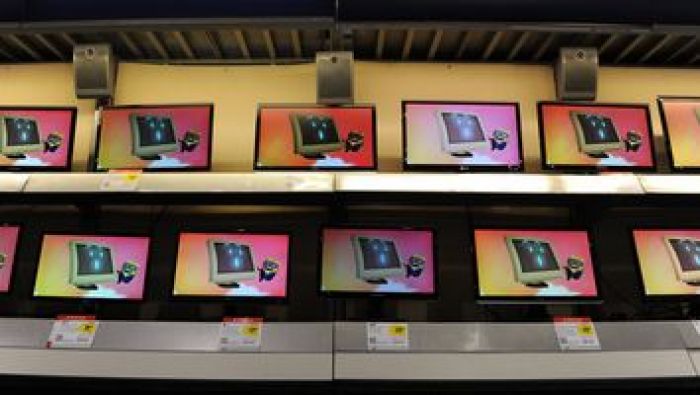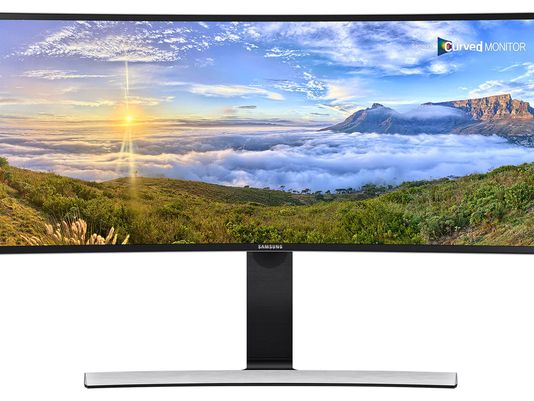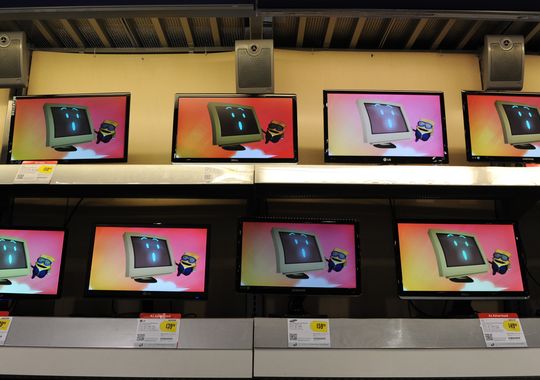Over your PC monitor? These changes will surprise you

Bob O’Donnell, Special to USA TODAY 9:56 p.m. EDT July 3, 2015

Your computer monitor is about to get a lot more immersive. The Samsung SE790C fuses two display trends: curved and ultra-widescreen aspect ratio.(Photo: Reviewed.com)
FOSTER CITY, Calif. — Pity the lowly computer monitor.
Once the center of our desktop computing universe, the PC's display was an object of admiration — especially as it slimmed down from its chubby, fuzzy CRT days to the sleek, slim, super-sharp LCD-based versions we now take for granted.
Today, the monitor is in that most dreadful of technology categories: the commodity.
Think about it. When was the last time you worried about its features or capabilities? Even the rush to larger sizes slowed several years back.
But inspired by a combination of high-resolution 4K televisions and the crystal-clear displays on our smartphones and other devices, the world of PC monitors is seeingsome impressive new additions.
First, there are some really cool super-wide 34-inch monitors from Dell, HP, LG, Samsung and several others, which feature a 21:9 aspect ratio (width to height). While monitors lagged behind TVs in the transition to widescreen (16:9 aspect ratio), they now lead the charge to these ultra-wide 21:9 displays. And taking a nod from TVs, some are curved as well, providing a more enveloping view.
For hard-core gamers, these monitors can be a dream come true. They bring you into the action — especially if you put two side by side — providing a perspective at the outer limits of your peripheral vision.
They're compelling even for non-gamers because you can easily view multiple full-screen windows side-by-side. They're also great for creative types like photographers and musicians, who always look for more screen real estate for their digital creations.

Computer monitors on display at Best Buy in Wilmington, Del. (Photo: Eileen Blass, USA TODAY)
In addition to screen width, monitors are starting to lead the way on resolution. As you might expect, there are now plenty of 4K monitors that offer similar resolution to new 4K TVs, but there are also some vendors (notably Dell and HP) selling 5K displays, which at a resolution of 5,120 x 2,880 offer nearly double the number of pixels.
Apple also has a stunning 5K display built into its 27-inch retina iMac. (No one currently combines an ultra-wide 21:9 monitor with 5K resolution — that's something we can look forward to.) Viewing these 5K displays up close you'll realize just how far monitor improvements have come since you probably last bothered to check.
One challenge to be aware of: If you get serious about these ultra high-resolution displays, you have to be more conscious of your connectivity choices. Current standalone 5K displays require two DisplayPort 1.3 connectors to properly drive them, which will likely require a new video card for your PC (and may not be possible on some notebooks).
There are also some interesting new applications for monitors. First, Lenovo and a few other PC vendors, inspired by Intel, have begun to offer PCs on a stick — little devices not much bigger than a USB stick that feature an HDMI connection and plug straight into a monitor. They sell for less than $150, and essentially turn your monitor into a full-blown PC — although you still have to supply a keyboard and mouse.
Along similar lines, later this fall some specially equipped Windows phones running Windows 10 Mobile will also be able to plug straight into a monitor and leverage the large, high-resolution display to run your phone's apps. Called Windows Phone Continuum, it will essentially turn these Windows phones into PC-like devices — an intriguing possibility, especially for some developing markets where PC penetration remains low.
To be clear, these new Windows phones cannot and will not run desktop Windows applications — they have to be Windows phone apps — but the quality of the experience they enable for things like Microsoft Office and Web browsing is pretty impressive.
The moral of the story: Don't give up on PC displays just yet. Turns out you can teach an old dog some new tricks.
Bob O'Donnell is founder and chief analyst of TECHnalysis Research, a technology consulting and market research firm that provides strategic consulting and market research.
Read or Share this story: http://usat.ly/1LYTvDV









